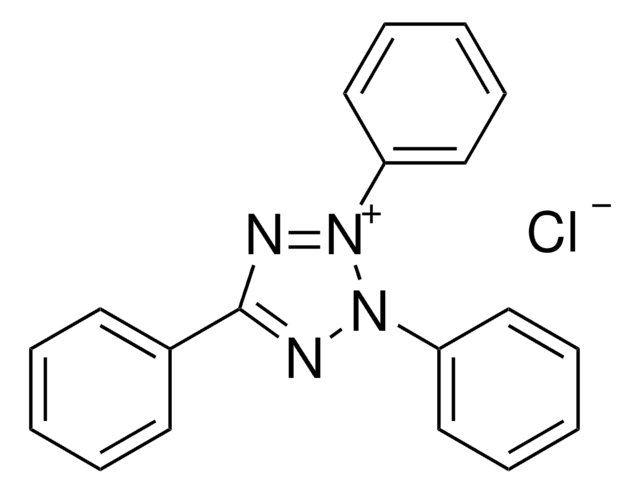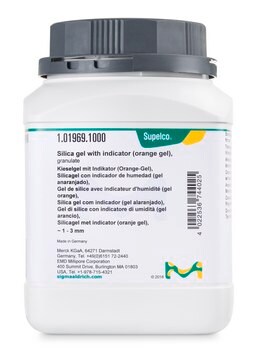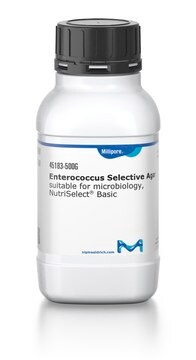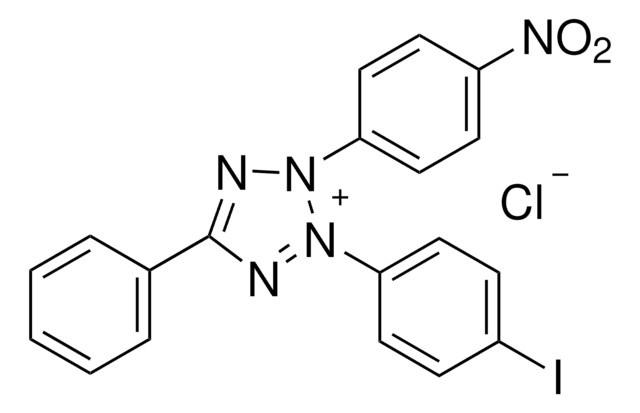1.08380
2,3,5-Triphenyltetrazolium chloride
Color indicator. Supplement in culture media for the microbiological analysis of food and water samples
Synonym(s):
2,3,5-Triphenyltetrazolium chloride, TTC, TT, TPTZ, TTZ, Tetrazolium Red
About This Item
Recommended Products
Quality Level
Assay
≥98% (calculated on dried substance, perchloric acid titration)
form
solid
pH
3.7 (20 °C, 10 g/L in H2O)
mp
243 °C (decomposition)
solubility
150 g/L
bulk density
230 kg/m3
application(s)
microbiology
storage temp.
2-30°C
SMILES string
[Cl-].c1ccc(cc1)-c2nn(-c3ccccc3)[n+](n2)-c4ccccc4
InChI
1S/C19H15N4.ClH/c1-4-10-16(11-5-1)19-20-22(17-12-6-2-7-13-17)23(21-19)18-14-8-3-9-15-18;/h1-15H;1H/q+1;/p-1
InChI key
PKDBCJSWQUOKDO-UHFFFAOYSA-M
Looking for similar products? Visit Product Comparison Guide
General description
Application
Analysis Note
Identity (UV/VIS-Spectrum): passes test
Absorption maximum λmax. (water): 245 - 248 nm
Spec. Absorptivity A 1%/1cm (λmax; 0,01 g/l; water; calculated on dried substance): ≥ 770
TLC-Test: passes test
Loss on drying (70 °C; ≤ 1 hPa): ≤ 0.5 %
Suitability for testing the germinability of seeds: passes test
Suitability for microbiology: passes test
Signal Word
Danger
Hazard Statements
Precautionary Statements
Hazard Classifications
Eye Irrit. 2 - Flam. Sol. 1 - Skin Irrit. 2
Storage Class Code
4.1B - Flammable solid hazardous materials
WGK
WGK 3
Regulatory Listings
Regulatory Listings are mainly provided for chemical products. Only limited information can be provided here for non-chemical products. No entry means none of the components are listed. It is the user’s obligation to ensure the safe and legal use of the product.
FSL
Flammable solids
Flammable solid
Hazardous rank III
ISHL Indicated Name
Substances Subject to be Indicated Names
ISHL Notified Names
Substances Subject to be Notified Names
Certificates of Analysis (COA)
Search for Certificates of Analysis (COA) by entering the products Lot/Batch Number. Lot and Batch Numbers can be found on a product’s label following the words ‘Lot’ or ‘Batch’.
Already Own This Product?
Find documentation for the products that you have recently purchased in the Document Library.
Customers Also Viewed
Our team of scientists has experience in all areas of research including Life Science, Material Science, Chemical Synthesis, Chromatography, Analytical and many others.
Contact Technical Service











